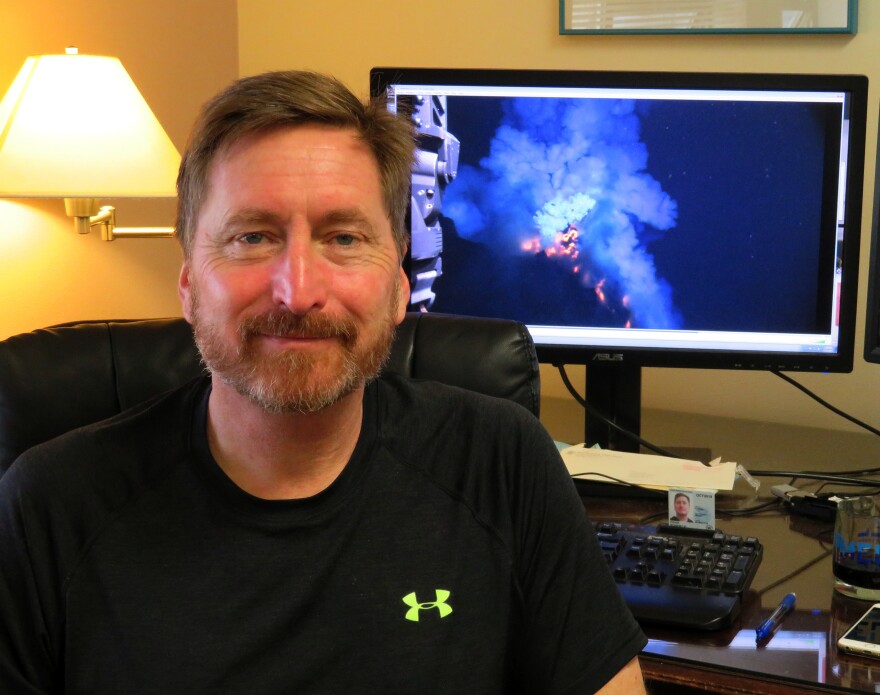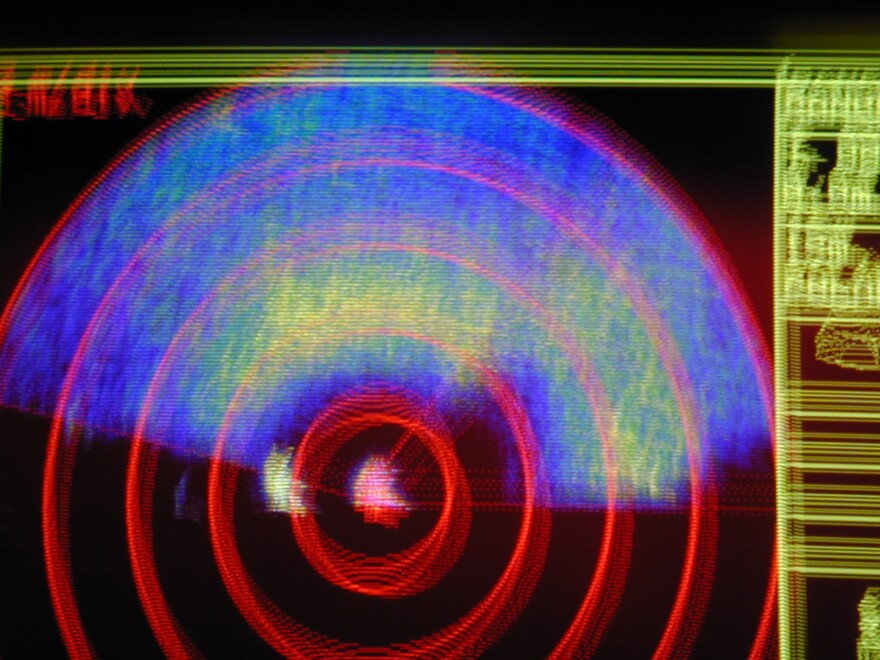We’re all about sound here at KLCC. And so is the Ocean Acoustics Program at NOAA’s facility in Newport. Its program manager, Bob Dziak and his team of nine researchers, analyze underwater recordings which help gauge the health and activity of the waters. KLCC’s Brian Bull visited Dziak recently as part of our ongoing 50th Anniversary Road Trip.

Bob Dziak’s office is pretty basic. There’s a desk, a couple chairs, and a lamp. But with a simple click of a mouse, he can transport you to the most turbulent, churning depths of the Pacific Ocean.
“This is a volcano that’s located in the Mariana Islands,” he says, activating a video full of murky, roiling sound.
Ziak’s computer screen shows billows of steam and dislodged rock bursting from the ocean floor.
“…it’s not too far from Mariana Trench. It’s fairly shallow, roughly 1500 feet…”
Dziak says a special underwater microphone – called a hydrophone – was attached to a remote-controlled vehicle that traveled out to the eruptions. Encased in titanium and calibrated to withstand the deep sea pressure, the hydrophone has helped him learn about a part of earth science that was before…unfathomable.

“It’s estimated that up to 80 percent of the world’s volcanic eruptions occur under the ocean and are essentially unobserved," says Dziak.
"So that’s been our goal, is to find these eruptions and quantify the global pace of volcanism.”
And it’s not just the Mariana Trench six miles deep near Guam. There’s also sound gathering and research being done in the Polar Regions.
“And I recorded a couple examples of mega icebergs, these are icebergs that are the size of 50, 60 miles long, that would break off of the Antarctic ice sheet, float around the ocean, and then come back and run aground on the continental shelf of Antarctica.”

The recording is full of heavy, resonating hum.
“Essentially, it’s akin to a tuning fork. The iceberg is hitting the ground and causing the whole thing to resonate like that, so that’s why it has a kinda harmonic overtone or harmonic sound to it.”
And sometimes…Dziak scores two remarkable sounds back to back…
“A little bit of a vocalization from a baleen whale," he says, as a couple unusual murmurs emerge from the speakers.

"…and that’ll be followed by the sound of an earthquake,” he continues, as a deep rumbling follows.
Recently there’s been an uptick in less natural ambient noise…like the sound of propellers pushing a large ship across the surface… (WHIRRING OF BLADES)

...to sounds that almost seem more cosmic than from the deep blue…(PIERCING SONAR PINGS)
“You can imagine if you’re a marine animal, swimming in the trench, the Mariana Trench here, exposed to these kind of sonar pings, it’d be a pretty disrupting experience.”
Dziak says incidents of manmade sound have steadily increased since the 1950s. Global commerce through shipping, not to mention oil exploration and extraction…all have disrupted aquatic life.
"Many marine animals use sound to navigate, orient themselves, and find food. So obviously if it’s noisy out there, it’s kinda hard to do all these normal sound-using functions in order to survive.
"And so it can have a very detrimental impact on any marine animal population.”

The Department of Energy is scheduled to start building a wave energy facility in Newport next year. NOAA and Oregon State University researchers will test devices powered by ocean waves, to measure their impact.
“For everything from how much noise it makes, to how much electromagnetic signal it makes, to how it affects shorebirds.”
So next time you’re at the coast, enjoying the roar of the surf and cries of the seagulls, rest assured there’s sound aplenty under the crashing waves as well.
WEB EXTRA: See video of an underwater volcanic eruption in the South Pacific.
WEB EXTRA: See another underwater eruption as captured by NOAA.
WEB EXTRA: See NOAA's animated video of its hydrophone at work.
WEB EXTRA: Watch an animated video of icebergs paired with the actual sounds they make when running aground, colliding, and splintering apart.
Copyright 2017, KLCC.






